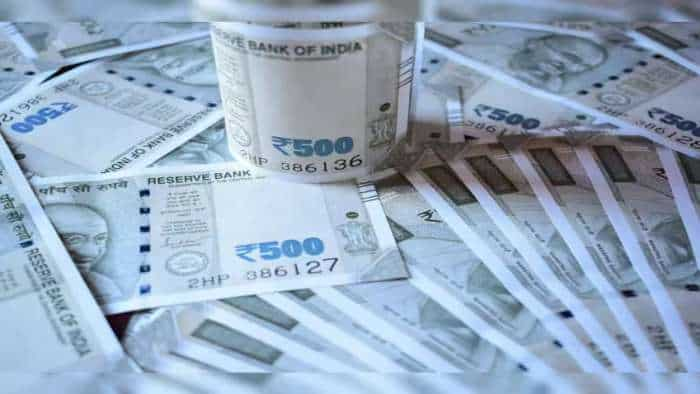7.7% interest compounded annually vs 7.5% compounded quarterly: Which fixed income rate works better? The answer may surprise you
5-year NSC vs 5-year FD: Ever compared how two fixed income instruments with similar annual interest rates but different compounding frequencies? Compare the Five-Year Post Office Time Deposit (fixed deposit) and the Post Office National Savings Certificates (NSC) here to understand the true power of compounding. The examples and figures may leave you with some food for thought this weekend.
)
Fixed income interest rate, power of compounding: Which fixed income investment scheme works better for you, one that pays 7.7 interest per annum compounded annually or one that pays 7.5 per cent per annum compounded quarterly? Well, the answer lies in time. For instance, take a five-year post office fixed deposit (FD) investment and a National Savings Certificate (NSC) investment, which currently yield interest at 7.5 per cent per annum compounded quarterly and 7.7 per cent per annum compounded annually, respectively. Hint: Investment in both matures in five years.
National Savings Certificates (NSC) vs Post Office Fixed Deposit (five years): See how your Rs 30,000 investment grows over time
| Time | National Savings Time Deposit Account (FD) | National Savings Certificates (NSC) |
| End of Year 1 | Rs 32,314 | Rs 32,310 |
| End of Year 2 | Rs 34,807 | Rs 34,798 |
| End of Year 3 | Rs 37,491 | Rs 37,477 |
| End of Year 4 | Rs 40,383 | Rs 40,363 |
| End of Year 5 (maturity) | Rs 43,498 | Rs 43,471 |
While the outcomes of both investments may look similar, they have a significantly different impact. If you take a different example. Since both fixed income instruments used in the example above have no upper investment limit, can you guess how larger investments will work?
National Savings Certificates (NSC) vs Post Office Fixed Deposit (five years): See how your Rs 2.5 lakh investment grows over time
| Time | National Savings Time Deposit Account (FD) | National Savings Certificates (NSC) | Difference (FD-NSC) |
| End of Year 1 | Rs 2,69,284 | Rs 2,69,250 | Rs 34 |
| End of Year 2 | Rs 2,90,055 | Rs 2,89,982 | Rs 73 |
| End of Year 3 | Rs 3,12,429 | Rs 3,12,311 | Rs 118 |
| End of Year 4 | Rs 3,36,529 | Rs 3,36,359 | Rs 170 |
| End of Year 5 (maturity) | Rs 3,62,487 | Rs 3,62,258 | Rs 229 |
Remember that the difference in the interest rates of both schemes is just 20 basis points per annum.
It is worth noticing that after the first year, the gap between the outcomes widens with every passing year to reach 6.7 times till maturity. This is the real power of compounding.
Now, imagine the results of fixed income investment plans of longer durations.
Although a simple concept, compounding yields surprising—and often alarming—results over time. The longer time you attach to a financial situation, the clearer the outcome of different compounding frequencies.
Meanwhile, here's a list of the interest rates and compounding frequencies applicable to guaranteed-income small savings schemes for the quarter ending June 30, 2024, according to the India Post website, indiapost.gov.in:
| Post office small savings scheme | Interest rate with effect from April 1, 2024 to June 30, 2024 | Compounding frequency |
| Post Office Savings Account | 4% | Annually |
| 1 Year Time Deposit | 6.9% (annual interest Rs 708 for Rs 10,000) | Quarterly |
| 2 Year Time Deposit | 7.0% (annual interest Rs 719 for Rs 10,000) | Quarterly |
| 3 Year Time Deposit | 7.1% (annual interest Rs 719 for Rs 10,000) | Quarterly |
| 5 Year Time Deposit | 7.5% (annual interest Rs 771 for Rs 10,000) | Quarterly |
| 5 Year Recurring Deposit Scheme | 6.7% | Quarterly |
| Senior Citizen Savings Scheme | 8.2% (quarterly interest Rs 205 for Rs 10,000) | Quarterly and Paid |
| Monthly Income Account | 7.4% (monthly interest Rs 62 for Rs 10,000) | Monthly and paid |
| National Savings Certificate (VIII Issue) | 7.7% (maturity value Rs 14,490 for Rs 10,000) | Annually |
| Public Provident Fund Scheme | 7.1% | Annually |
| Kisan Vikas Patra | 7.5% (will mature in 115 months) | Annually |
| Mahila Samman Savings Certificate | 7.5% (maturity value Rs 11,602 for Rs 10,000) | Quarterly |
| Sukanya Samriddhi Account Scheme | 8.2% | Annually |
| (Source: Indiapost.gov.in) | ||
Get Latest Business News, Stock Market Updates and Videos; Check your tax outgo through Income Tax Calculator and save money through our Personal Finance coverage. Check Business Breaking News Live on Zee Business Twitter and Facebook. Subscribe on YouTube.
RECOMMENDED STORIES

Top 7 Large and Mid Cap Mutual Funds With up to 21% SIP Returns in 10 Years: Rs 11,111 monthly SIP investment in No. 1 fund has sprung to Rs 40,45,114; know about others

Rs 3,500 Monthly SIP for 35 years vs Rs 35,000 Monthly SIP for 16 Years: Which can give you higher corpus in long term? See calculations
01:03 PM IST









 Small SIP, Big Impact: Rs 1,111 monthly SIP for 40 years, Rs 11,111 for 20 years or Rs 22,222 for 10 years, which do you think works best?
Small SIP, Big Impact: Rs 1,111 monthly SIP for 40 years, Rs 11,111 for 20 years or Rs 22,222 for 10 years, which do you think works best? Small SIP, Big Impact: Rs 2,100 monthly SIP for 40 years or Rs 5,100 for 20 years, which do you think works better?
Small SIP, Big Impact: Rs 2,100 monthly SIP for 40 years or Rs 5,100 for 20 years, which do you think works better? Retirement Planning: How you can take your corpus from Rs 2 crore to Rs 3.08 crore if you do this with your investment
Retirement Planning: How you can take your corpus from Rs 2 crore to Rs 3.08 crore if you do this with your investment From Rs 2,500 Monthly SIP to Rs 3 cr Corpus: How long-term investment can bring magical results from your SIP investment; see calculations to know that
From Rs 2,500 Monthly SIP to Rs 3 cr Corpus: How long-term investment can bring magical results from your SIP investment; see calculations to know that Power of Compounding: 3 easy-to-apply rules to learn how Rs 3 lakh lump-sum investment grows at a given rate of return over time
Power of Compounding: 3 easy-to-apply rules to learn how Rs 3 lakh lump-sum investment grows at a given rate of return over time